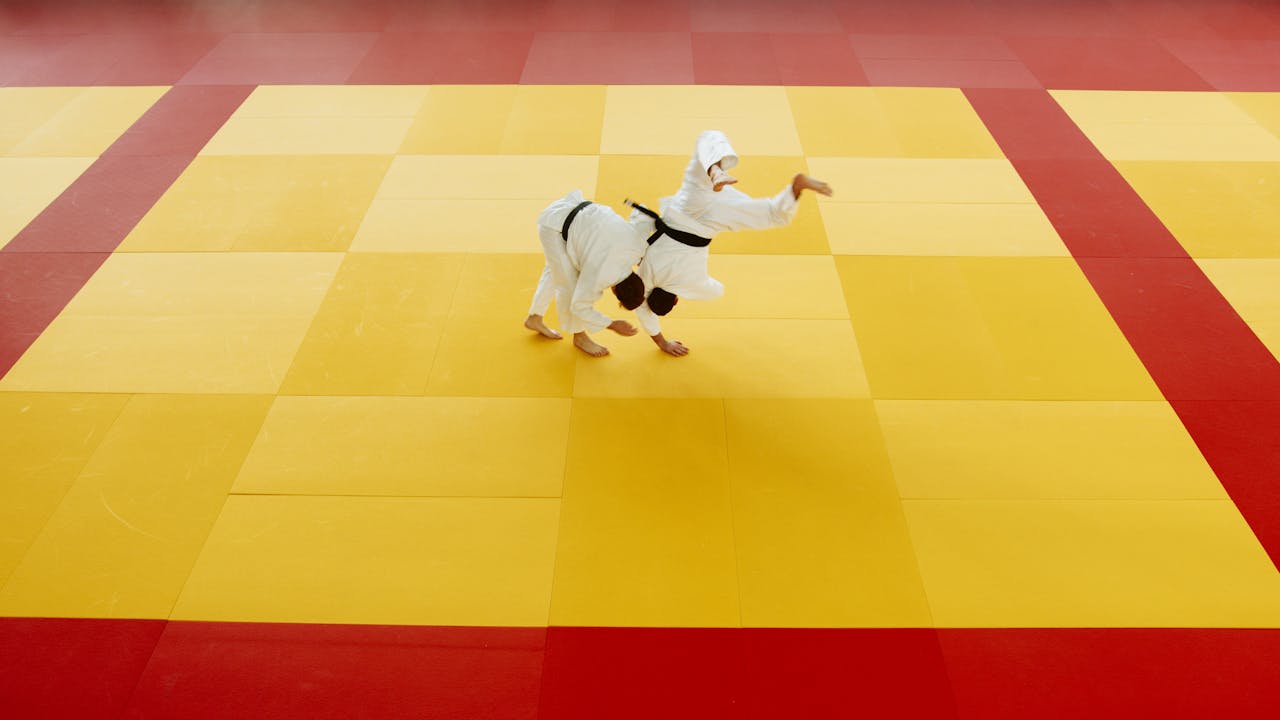In the ever-evolving world of sports training, coaches and athletes are always on the lookout for innovative methods to enhance performance. In recent years, the concept of kinetic chain exercises – where movements are executed in a series of interconnected sequences – has gained significant traction. This form of training is particularly relevant for judo athletes, whose sport demands both strength and fluidity of movement.
Rigorous training is the backbone of any athlete’s performance, and judo players are no exception. Kinetic chain exercises, when integrated effectively, can stimulate strength, resistance and agility, providing judo athletes with a competitive edge. This article will guide you through the ins and outs of kinetic chain exercises and how they can be incorporated into a judo athlete’s training regimen.
A lire aussi : How can UK martial artists protect their joints during high-impact training?
Understanding The Concept Of Kinetic Chain Exercises
The term ‘kinetic chain’ refers to the notion that movements affect joints and body segments in a chain-like manner. When one part of the chain moves, it impacts the rest of the chain, similar to the links in a physical chain. For judo athletes, understanding this concept is crucial. It is the foundation upon which their training schedules will be built.
In a scholarly review by a group of sports scientists published in a leading sports journal, kinetic chain exercises have been linked to improved power and agility. The study analysed the performance of elite athletes across various sports, providing compelling evidence in favour of this training method. In addition, a separate analysis published on Google Scholar also echoed these findings.
A voir aussi : What are the most effective recovery methods for UK boxers after a knockout?
Benefits of Kinetic Chain Exercises for Judo Athletes
Judo is a physically demanding sport that requires not only brute strength but also agile movement. Effective kinetic chain training enhances strength and agility, which are vital for judo athletes.
A 2018 study published in the Journal of Sports Science & Medicine, available on Crossref, explored the effects of kinetic chain exercises on athletes’ performance. The results were striking. Athletes who integrated kinetic chain exercises into their training schedules demonstrated significant improvements in their performance, particularly in areas such as sprint speed and jump height.
Moreover, the inclusion of kinetic chain exercises in the training programmes of judo athletes can help prevent injuries. Proper kinetic chain functioning ensures that the stress of physical activity is distributed evenly throughout the body, reducing the risk of injury.
How to Implement Kinetic Chain Exercises in Judo Training
Now that you understand the concept of kinetic chain exercises and their benefits, the question remains – how do you integrate them into a judo athlete’s training schedule?
The answer lies in understanding the specific movements and techniques used in judo. Once these have been identified, exercises can be designed to mimic these movements, strengthening the kinetic chain links involved.
For example, resistance training exercises such as squats and lunges can be used to strengthen the lower body, vital for judo throws and groundwork. Upper body workouts, including push-ups and pull-ups, can be tailored to enhance grip strength and arm power, essential for judo grappling.
Ensuring the exercises are sport-specific is crucial. This means the movements performed during training should directly translate to the movements executed during a judo match.
Tailoring Kinetic Chain Exercises to Individual Athletes
While kinetic chain exercises are beneficial for all judo athletes, it’s essential to tailor them to each athlete’s unique needs.
Each judo athlete has a different body composition, strength level, and technique style. Therefore, a ‘one-size-fits-all’ approach won’t work when it comes to kinetic chain training.
A judo athlete’s training schedule should reflect their individual strengths and weaknesses. For instance, an athlete who needs to improve their groundwork might focus more on lower body and core exercises. Conversely, an athlete looking to enhance their throwing technique might focus on upper body and balance workouts.
Professional guidance is essential during this process. A good sports trainer or coach should be able to identify an athlete’s strengths and weaknesses and design a training programme that addresses these areas.
In sum, integrating kinetic chain exercises into a judo athlete’s strength training regimen requires a thorough understanding of the concept, a well-designed training programme, and a tailored approach to meet the individual needs of each athlete. Through this method, judo athletes can significantly enhance their performance, boosting their chances of success in this challenging and exciting sport.
The Role of Resistance Training in Kinetic Chain Exercises
Resistance training forms the backbone of kinetic chain exercises, and it’s role in improving the performance of judo athletes cannot be overstated. Resistance exercises are designed to improve muscle strength, tone, and endurance, making them a critical aspect of strength conditioning for judo athletes.
A systematic review and meta-analysis published on Google Scholar have highlighted the key benefits of incorporating resistance training into an athlete’s regimen. These benefits include improved strength power, agility, balance, and coordination. This is particularly advantageous for judo athletes, who require these skills to execute moves correctly and efficiently.
A key feature of resistance training is its ability to mimic the movements and techniques used in judo. Squats, lunges, push-ups, and pull-ups can all be tailored to enhance the specific skills required for judo. For instance, squats and lunges can improve lower body strength, necessary for judo throws and groundwork, while push-ups and pull-ups can enhance arm power and grip strength, vital for judo grappling.
However, it’s crucial to ensure that these exercises are performed correctly. If executed incorrectly, they can lead to injury, or may not deliver the desired results. Therefore, it’s advisable to undertake these exercises under the guidance of a skilled coach or trainer.
The Impact of Kinetic Chain Exercises on Athletic Performance: A Conclusion
Through the integration of kinetic chain exercises into strength training, judo athletes can significantly enhance their athletic performance. This form of training targets the body’s interconnected chain of muscles, thereby improving strength, agility and resistance – all crucial for success in judo.
A multitude of studies, including those found on Google Scholar and Scholar Crossref, have consistently highlighted the benefits of this training method. From improved sprint speed and jump height to enhanced strength power and change direction ability, the outcomes are compelling.
However, the key to successfully implementing kinetic chain exercises into a judo athlete’s training schedule lies in tailoring the exercises to the specific needs of each athlete. As each judo athlete is unique, with different strengths, weaknesses, and techniques, their training should reflect this individuality.
Incorporating resistance training, a crucial component of kinetic chain exercises, can further boost athletic performance. Squats, lunges, push-ups, and pull-ups, when executed correctly and with precision, can enhance key skills necessary for judo, from groundwork to grappling.
In conclusion, kinetic chain exercises, when integrated effectively and tailored to each athlete, offer a powerful tool for enhancing the strength and performance of judo athletes. Fueled by a solid understanding of the concept and a well-designed training programme, judo athletes can harness the benefits of this innovative training method to secure success in this challenging and thrilling sport.

